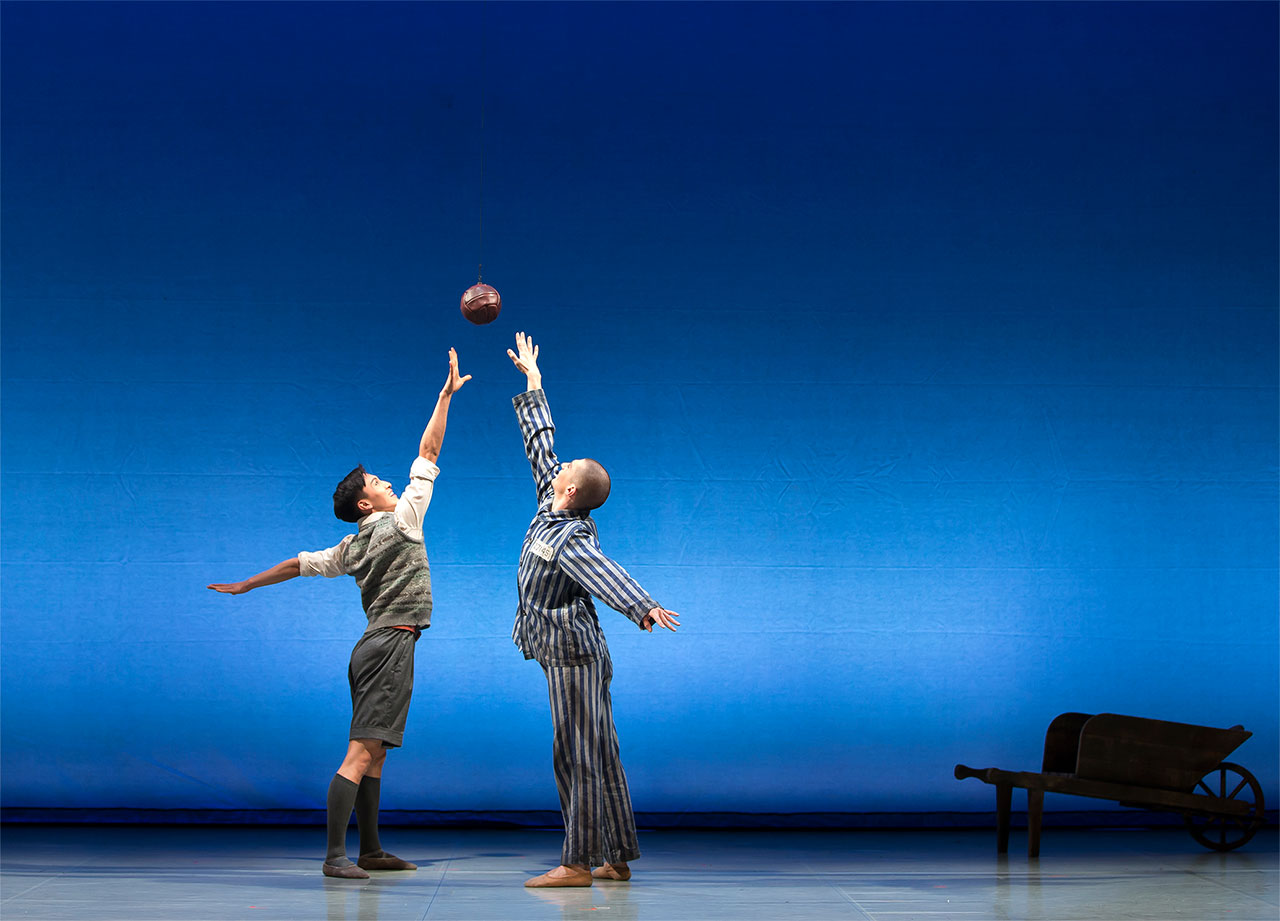One of our online editors visited West Yorkshire Playhouse this week to see Northern Ballet’s sensational production of The Boy in the Striped Pyjamas.
As I sat in anticipation in the audience of West Yorkshire Playhouse’s Quarry Theatre on Tuesday night, I was overcome with two emotions: excitement and concern. Excitement to see a story I have loved for a decade performed on stage in a format through which I had never expected to see, and concern that, having never seen a ballet and knowing nothing about dance, it would be lost on me.
All my preconceptions were soon vanquished as Northern Ballet’s The Boy in the Striped Pyjamas came to life with energy, intense feeling and great power – I was watching a ballet for everyone, for people who have never seen a ballet or know if they like ballet (and I challenge them not to after seeing this performance) and lifelong patrons of the art alike. While I was sceptical about how such a seemingly delicate form could portray the power and brutality of Nazis, Daniel de Andrade’s incorporation of the iconic goose-step march into the movement of the soldiers and the uniformity of their collective movement perfectly encapsulated the regime and its orchestrators.
I soon forgot that grown adults were playing children, not because of their smaller size, because of their energy, varying levels and youthful signatures that at times seemed almost as if they danced in a different world to the adult one burdened with death, war and moral criminality. Gretel (Rachel Gillespie), however, transcended those boundaries and straddled those worlds as she underwent a transition from spritely, girlish elegance to mirroring Nazi motifs into her movement as she falls for Lieutenant Kotler (Sean Bates), becomes bound in the ideology of the regime that eventually sends her mother to insanity and drink and kills Bruno (Kevin Poeung), her brother.
“If there was ever an example of actions speaking louder than words, this performance is it.”
Poeung’s transportation of pure innocence, naivety and blind love from his world of tyre swings and school to the barbed wire fences of Auschwitz-Birkenau is both overwhelmingly joyful and painfully devastating. In his friendship with Shmuel (Ashley Dixon), as fences are removed through ball games and the exchange of apples, it becomes clear through choreography in unison that they are the same, uniform and fences aside. While John Boyne’s novel highlights the boys’ similarities through a shared birthday, age and interests, this performance makes that unnecessary. If there was ever an example of actions speaking louder than words, this performance is it.

The performance was perfectly overtured by Gary Yershon’s folk-toned music which amplified the tension, fear, sadness and emotion, allowing the effect of the dance to be experienced fully with a hint of the setting’s culture. One of the most striking uses of music occurred as Gretel danced with Lieutenant Kotler, here delicate strings clashed and, at times, became harmonious with aggressive and menacing woodwind. As the two sounds became more one, the audience heard and saw how this regime of hatred drew the naïve into line.
The only thing about the performance that I would criticise is the decision to have ‘The Fury’, Bruno’s childish misunderstanding of Fuhrer and regime his father promotes, played by Guiliano Contadini, made a physical presence on stage. For me it detracted from what I perceived to be a strong message in the novel: essentially that humans have the overwhelming capacity to be cruel, destructive and void of morality towards others and that unless we act with love, and at times see the way children do, history is doomed to repeat itself. The Fury’s mirroring of movements and control of characters at times, such as Father, Lieutenant Kotler and its corruption of Bruno’s world seemed to remove the human perpetrators of some responsibility – suggesting it was darkness and fear’s control rather than their actions that led to the tragic ending. This aside, the character itself provided for a frightening and haunting spectacle, as it lurked within the world of the characters and created shadows in areas of light. Its presence, with meaning to the greater moral of the story aside, added to the menace and loathing woven into the story.
The Boy in the Striped Pyjamas was visually and emotionally sensational, reviving and revolutionising a cherished story in a form that was not shrouded in misleading words or untruths. Pure in its form and message, this ballet deserves every credit it receives.
The Boy in the Striped Pyjamas finishes its run in Leeds tomorrow evening but will remain in Yorkshire to be performed at Hull New Theatre from the 18th-21st October.
Rose Crees
(Image courtesy of Northern Ballet)

